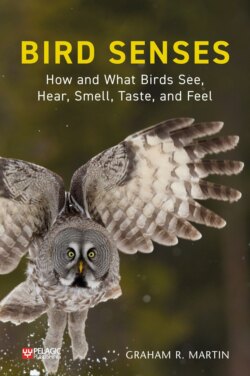Читать книгу Bird Senses - Graham R. Martin - Страница 36
На сайте Литреса книга снята с продажи.
Who, how, and what to measure?
ОглавлениеThere are many ways in which such training techniques can be used to investigate the senses of birds in a robust way. These allow comparisons between species. However, not all species will be readily amenable to such training, or investigators may not be able to invest the time necessary for the use of these training procedures in full. Some investigations have been able to use the basic principles of these training procedures to gain insights into birds’ senses albeit in a rather limited way compared with the full descriptions that might be aspired to. For example, the first investigations of whether birds could detect ultraviolet light was done using a modified procedure with hummingbirds, and some early work on the sense of smell in doves was carried out using modifications of this kind of approach.
Much depends on the time available to do the work and the motivation of the investigators to work with their species. Unfortunately, modern ways of funding science and pressure to produce papers often preclude long-term training projects of the kinds described here, but work is still being done. For example, recently there have been some valuable investigations of vision in diurnal birds of prey and in parrots, using just these kinds of procedures. Valuable insights into what diving birds might see underwater have come from training investigations of these kinds. All of these studies took many months and required the accumulation of many thousands of trials with the birds.
There remain plenty of opportunities to pose questions about the sensory capacities of most bird species. As the comparative database of species’ sensory thresholds grow, the results become of ever greater value.
